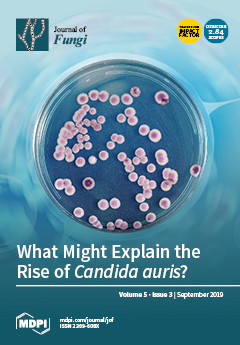Despite improvement in the prognosis of HIV/AIDS (human immunodeficiency virus/acquired immune deficiency syndrome) patients on antiretroviral therapy (ART), cryptococcal meningitis (CM) still causes 10–15% mortality among HIV-infected patients. The immunological impact of ART on the CD4
+ and CD8
+ T cell repertoire during cryptococcal co-infection is unclear. We determined longitudinal phenotypic changes in T cell subsets among patients with CM after they initiated ART. We hypothesized that ART alters the clonotypic phenotype and structural composition of CD4
+ and CD8
+ T cells during CM co-infection. For this substudy, peripheral blood mononuclear cells (PBMC) were isolated at four time points from CM patients following ART initiation during the parent study (ClinicalTrials.gov number, NCT01075152). Phenotypic characterization of CD4
+ and CD8
+ T cells was done using T cell surface marker monoclonal antibodies by flow cytometry. There was variation in the expression of immunophenotypic markers defining central memory (CD27
+CD45R0
+), effector memory (CD45R0
+CD27
–), immune activation (CD38
+ and Human Leucocyte Antigen DR (HLA-DR
+), and exhaustion (Programmed cell death protein one (PD-1) in the CD4
+ T cell subset. In comparison to the CD4
+ T cell population, the CD8
+ central memory subset declined gradually with minimal increase in the effector memory subset. Both CD4
+ and CD8
+ T cell immune exhaustion and activation markers remained elevated over 12 weeks. The relative surge and decline in the expression of T cell surface markers outlines a variation in the differentiation of CD4
+ T cells during ART treatment during CM co-infection.
Full article






